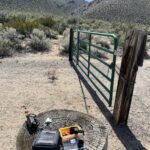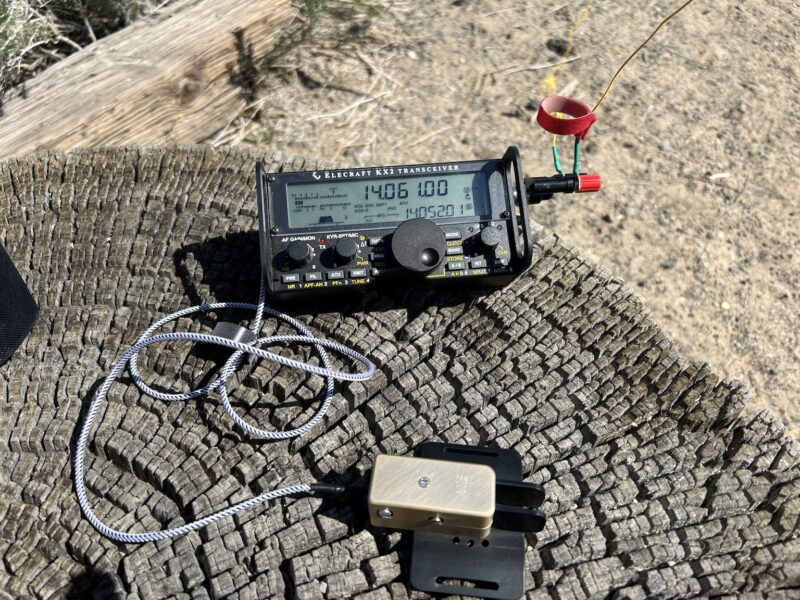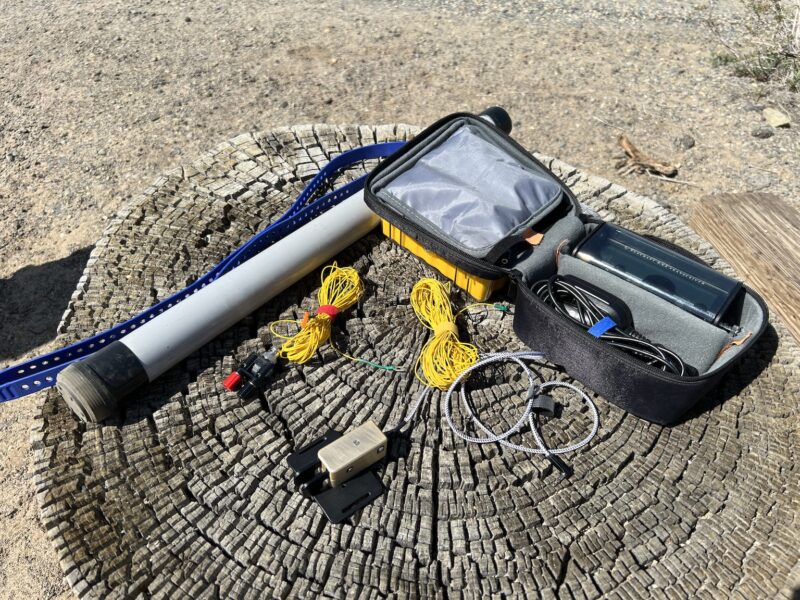After a long hiatus, I am getting back to my weblog again. Work kept me exceptionally busy over the last few months. Most of my energy went into project work and the writing associated therewith. There was little writing energy left over after all that. What little was left went into my journal, which is also suffering from neglect.

I built (and revised) a 25-ft random wire for quick deployments. Wayne Burdick, the engineer behind the Elecraft radios, recommends such a wire for quick deployments with their radios.
It is a nonresonant antenna, meaning that is not tuned for any of the amateur radio bands. Therefore, a matching unit (sometimes called an Antenna Tuner — which it does not do, but instead transforms the impedance at the output of the matching unit to the impedance of the antenna or feedline). Burdick recommends using a BNC to binding post adapter directly to the radio. Then there is no feedline loss from the impedance mismatch and Elecraft ATUs can match a wide range of impedance presented to them.
A second wire called a counterpoise is attached to the ground side of the binding post adapter and thrown on the ground. This provides a ground connection that is necessary to complete the antenna. Both wires form the antenna and my last iteration was an adjustment to the counterpoise to use one wire instead of three (which were forever tangled).
I have not tested this configuration with an antenna analyzer. I will one day when I am in the field. But for now, in testing it on the air, it is working just fine.

This afternoon The Girl and I walked our normal route out at Silver Saddle Ranch. I have a bit of a slow day before things get busy again. I checked propagation and the ionosphere is quiet today (although I think there was an X-ray burst earlier in the day that caused a temporary radio blackout). I also noticed a handful of POTA activators were working. So I decided to give myself a few minutes of fun.
I spent a few minutes rearranging some of the radio kit in my 4Runner, then retrieved the 10-m SOTAbeams mast, the KX2, the Pelican case that contains the AME PP2 and Mini-B paddles, and a couple of Voile straps. I settled The Girl in the rig and walked the 10m to my operating point, the gate into the ranch road to the borrow pit and an old block of cottonwood stump.
It took me about ten minutes to deploy the mast, antenna, radio, and key. I used my iPhone to log with the HAMRS app. I spent a few minutes listening for the activators, then when there was a gap in the pileup, I sent my call.
In a bit more than a half-an-hour, I had four contacts in my log. By then it was 1530h local and I knew the kiddos would have all dispersed from school. So my route home would be clear.
It took me another ten minutes or so to tear down the station and pack things up. I paused for a few minutes to make a couple of photographs with my iPhone. I then carried the station back to the rig and we headed home.

It was a good day. Life is good. My dog and I are good together.
I have more to say and some lessons learned over the last few months activating parks for Parks on the Air. I also have more antenna builds to share as well as more stories and photographs.